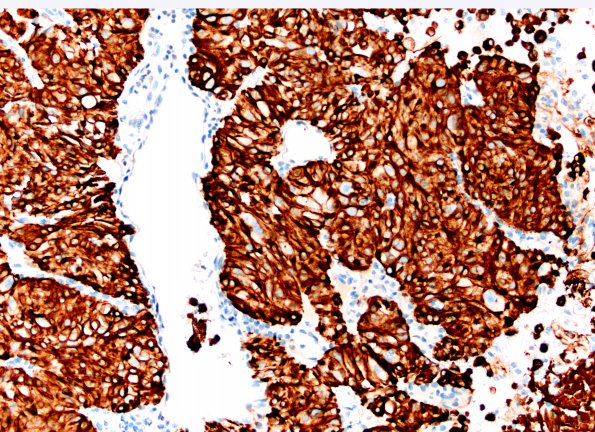Table of Contents
Washington University Experience | NEOPLASM (SELLAR) | Pituitary Adenoma - Pituitary Neuroendocrine Neoplasm | Corticotroph | 18C Pituitary adenoma (Case 18) CAM52
CAM 5.2 immunoreactivity is distributed in variably cytoplasmic or paranuclear/Golgi, without evidence of compact concentric Crooke's cell change. (CAM 5.2 IHC) ---- Not shown: The tumor is strongly synaptophysin immunoreactive (cytoplasmic). The tumor tissue is negative for TTF-1, GH, prolactin, FSH, LH, and TSH. Reactivity for proliferation marker Ki-67 labels more than 20% of tumor nuclei and, very focally, exceeds 80%. ---- Comment: In the context of a large, invasive macroadenoma without significantly elevated serum ACTH or cortisol, these histological findings (strong ACTH immunoreactivity, pleomorphism, high mitotic/proliferation index, necrosis) supported a diagnosis of atypical pituitary (silent corticotroph) adenoma, with markedly high mitotic/proliferation indices and necrosis.' The term 'atypical' is discouraged in the new 2016 and 2021 WHO classification systems for tumors of the pituitary, but is assigned here, nevertheless, as an alert to the possibly aggressive nature of this tumor.

